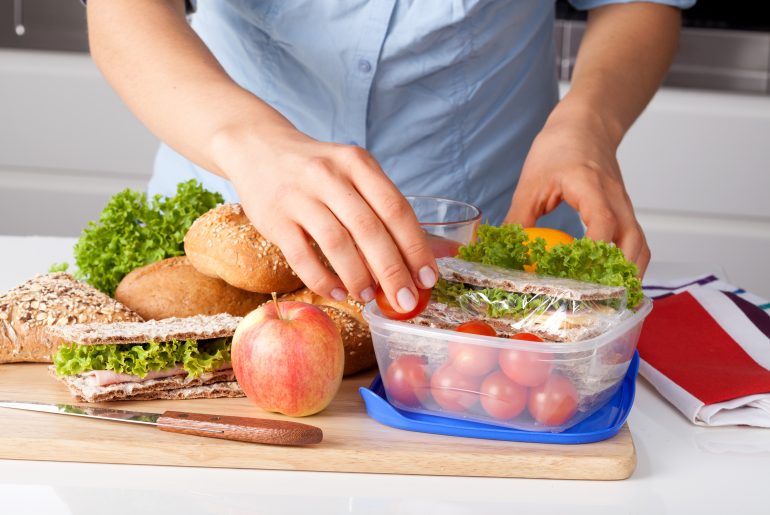Chances are you’ll worry more about finding foods for your child’s lunchbox that they’ll actually eat, than you will about whether those foods will be safe to eat by the time they get there.
More than 48 million Americans will become stricken with food poisoning this year. That’s nearly 1 in every six people resulting in 128,000 hospitalizations and more than 3000 deaths. Children are the most vulnerable to foodborne illnesses, so it’s worth taking extra precautions when packing their lunches.
“One thing parents might want to do before school starts is pack a simple lunch with a cold source, and leave it on the counter,” said Marianne H. Gravely, Senior Technical Information Specialist of the Food Safety Education Staff at the USDA. “Wait the amount of time the child has to wait until lunch, and see if it’s still cold.”
This activity gets the kids involved in their lunch planning but it also starts to teach them to become aware of the safety of foods they are eating even when parents aren’t around, says Gravely.
Another trick is to pack the lunchbox the night before, and keep the whole thing in the refrigerator overnight with the lid cracked open. That way, foods start off together cold and can stay cold longer. If you’re making the sandwich in the morning, you’ve raised the temperature of some of the ingredients by bringing them to the counter for assembly.
“It’s easier to keep cold foods cold than it is hot foods hot,” said Gravely. “Almost anything is doable in a lunchbox if you want it to be cold — sandwiches, yogurt, cheeesesticks.”
Hot foods create their own challenges.
“Sometime parents will want to pack something like chicken nuggets, but those are really hard to keep hot,” said Gravely. “Hot foods need to still measure 140 degrees at lunch time.”
Gravely suggests for hot foods that parents boil hot water and fill the empty thermos and let it sit for a few minutes. This helps warm the temperature of the vessel, preparing it for the hot food. Hot foods should be heated above 165 degrees before packing.
Parents can also help protect their children by encouraging hand washing. Many schools will let children stop in the washroom on the way to lunch, but some might not. Discuss this with your child and provide them with hand wipes, so they can wash up before eating.
after school food safety
After school activities are another opportunity for parents to show healthy habits.
“Even if you’re in charge of something as simple as orange slices, you should carry those in a cooler, individually bagged,” said Gravely. “Not only are they more enjoyable chilled, but you won’t have a bunch of dirty hands reaching into a bowl after football practice .”
Gravely advises keeping coolers under a shady tree or under the bleachers. If you’re going to be out on the field for a long time, packing more than one cooler can help as well. Use one for items you’ll use sooner, and another, that you can keep the lid shut, for items you won’t need for several hours.
lunchpacking 101
While it seems like a no brainer, one of the easiest ways to avoid foodborne illness is to pack foods you know your child is actually going to eat.
“You want your child to eat the lunch you gave them,” said Gravely. “You don’t want to go badmouthing other families out there, but you never really know how other parents are handling food. Plus, so many kids now days have allergies, trading food just isn’t a good idea.”
Keep kids healthy
According to the USDA, parents should remember the four basic steps when preparing lunches and should share good practices with their kids:
- Clean. Keep all utensils, cutting boards, countertops and hands clean.
- Separate. Use different cutting boards for produce and meat.
- Cook. Cook foods to the right temperature, and always double check with a food thermometer.
- Chill. If packing perishable food items like deli meat sandwiches, yogurt or hard-boiled eggs, be sure to pack at least two cold sources.
Also see, These are the fruits you should definitely wash before eating.




